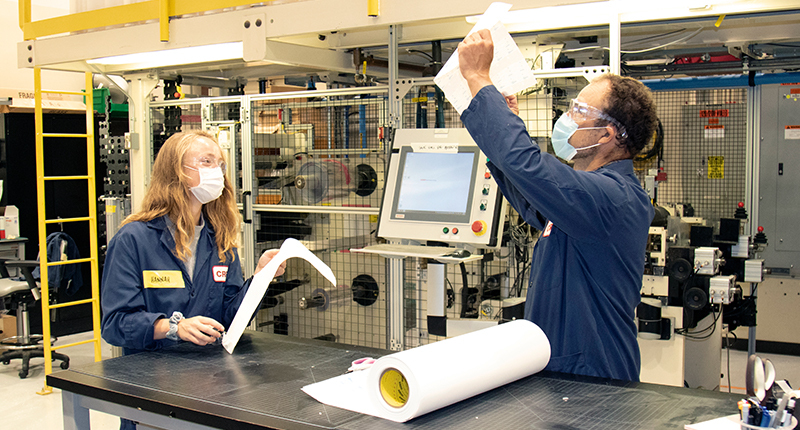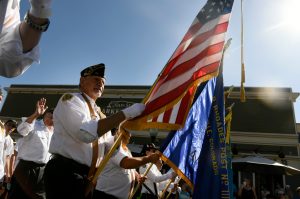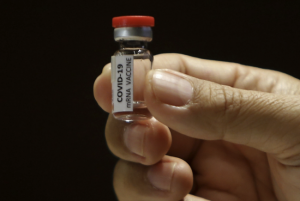There’s a COVID-19 test that is as routine, simple and quick as brushing your teeth.
But it’s not legal for widespread use. Yet.
Frustrated by restrictions on an approach that could ease the pandemic, the Bay Area tech community is helping lead a growing national effort to spur legislative and regulatory reforms that would allow at-home testing.
“What is important is to catch COVID-19 early on, before you develop symptoms. And to be able to act quickly,” said Jon Frankle of Los Gatos, a retired Google software engineer who contributes to the movement’s new RapidTests.org webpage, built by San Francisco-based data scientist Chris Said.
“The testing regimen we have now isn’t allowing that,” he said.
Quick at-home tests, now in development at 3M, Sherlock Biosciences, E25Bio Inc. and other companies around the nation, are likely to face fierce regulatory headwinds. While the at-home test in development at South San Francisco’s Mammoth Biosciences will likely earn federal approval, it won’t be available until early next year.
Meanwhile, millions of Americans are returning to school, work and other large gatherings – oblivious that they could be spreading the virus.
“It’s insane that this is something that could stop outbreaks and epidemics, when used as a public health tool, and there is no clear path to legally introduce these tests without the companies that make them getting shut down,” said Harvard epidemiologist Dr. Michael Mina, who directs the Rapid Tests project.
“We have a workable solution today,” he said. “But it is illegal to do this right now.”
This is the challenge: The FDA, entrusted with regulating drugs and devices, only approves highly accurate tests. In the medical realm — say, a doctor diagnosing a sick patient — such accuracy is essential.
By that measure, these simple, paper-based tests fall short. PCR tests have a 98% sensitivity rate; these tests have an average sensitivity that ranges between 70% and 90%.
They’re risky, because they offer false reassurance, according to the FDA. “An individual with a false negative result from an over-the-counter diagnostic test may be less likely to quarantine despite symptoms, putting others in the community at risk,” said FDA spokesperson Emma Spaulding.
In the at-home setting, with no physician involved, the FDA wants a test that performs with a minimum of 90% sensitivity, she said.
But these new tests aren’t intended for the doctors’ office, say advocates.
Rather, they’re a public health tool, ensuring population-level wellness by screening vast numbers of people, day in and day out. Such tests would quickly detect outbreaks, and could be used before allowing entrance to schools, restaurants, airports, and stadiums.
The tests use a paper strip coated with antibodies, which detect the virus’s proteins. The person swabs the front of their nose, mixes the sample with liquid and applies it to the strip. The antibodies detect the viral proteins, triggering a color change.
Just as a vaccine or mask doesn’t have to be perfect to shrink a pandemic, nor does a test, they say.
The new tests are more practical than current PCR tests, which are expensive and slow, often returning results too late to be useful. PCR is so sensitive that it’s causing unnecessary quarantines of people who are no longer infectious, advocates say.
“The threshold should be lower, not higher,” said Carlos-Henri Ferréc of the Boston biotech E25Bio.
Advocates say the new tests are good enough to detect the virus when someone is most infectious. And even if they miss an infection one day, they’re likely to catch it the next. Cheap and easy, they can be used repeatedly.
But there’s no alternative regulatory route for this kind of test.
The group Rapid Tests aim to change that. Through letter writing, petitions and meetings with legislators, it is urging the FDA to reconsider its stance. It is also calling on a more appropriate branch of the federal government — the CDC or Centers for Medicare and Medicaid Services, not the FDA — to authorize the test.
The group has appealed to Gov. Gavin Newsom and other governors to bypass the FDA and allow sale of the tests, which is legal if using components that are sourced within the state.
“Widespread, quick, and cost-effective testing is absolutely essential to our efforts to halt the spread of the coronavirus,” said U.S. Rep. Anna Eshoo, D-Palo Alto. If the House-passed Heroes Act becomes law, she said, its funding could make rapid tests more quickly available to the public.
Said, who built the Rapidtest.org website from his San Francisco home, enlisted a service called Resist.bot, which allows people to compose and send letters to elected officials from the messaging apps on their mobile phones. To send the letters, users text the word “rapid” or “rapid gov” to 50409 and follow a series of prompts to write their governor, or “rapid congress” to write their senators and representative.
“I decided I wanted to create a website that could spread the word and change the regulatory mindset,” he said. So far, the site has generated 14,000 letters to elected officials.
About 50 volunteers are donating time and other skills to expand the project’s reach. In Los Gatos, Frankle’s son, David, a recent Harvard grad, is spreading the word through his associated Facebook group — Rapid Tests Advocacy Network — which now has about 2,450 members.
“There’s a groundswell of support,” said Mina. “It’s clear that people are catching on.”



















